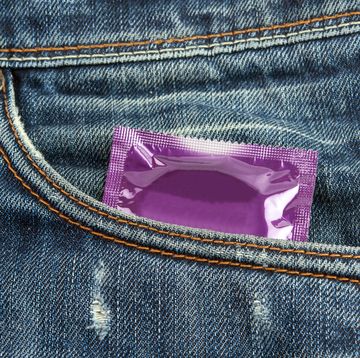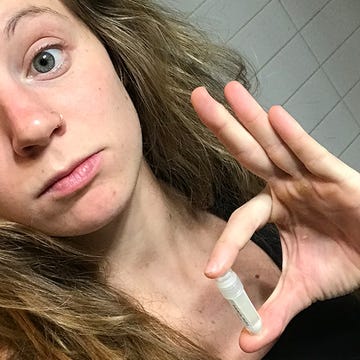7 WTF "Cures" for Horniness Throughout History
Back when being turned on was considered a medical problem

When there are constant battles about issues like abortion and access to birth control, it can be easy to forget that we live in an overwhelmingly sex-positive society. It’s a pretty accepted fact that sexual desires are a part of life. That wasn’t exactly true in the olden days. For much of history, sexuality was considered a sin that doctors were on a mission to fix. “In the 17th, 18th, and especially 19th centuries, people started thinking about sexuality in terms of medicalization,” says Zhana Vrangalova, Ph.D., sex researcher and adjunct professor at New York University. "Doctors started to make certain aspects of sexuality into disorders and diseases, so they tried to find medical cures to solve them." Check out these crazy "remedies" of days past.
Cliterodectomies

The removal of the clitoris was used for a wealth of sexual "problems" in the 19th and early 20th centuries in both the U.K. and the U.S., says Vrangalova. “At the time, masturbation was considered a serious disorder with consequences like blindness and mental retardation," she says. "Preventing it was seen as medically necessary." Cliterodectomies were also used to treat nymphomania, mania, epilepsy, and what was widely known as “hysteria, a common anxiety diagnosis that for about 2,000 years, Europeans believed was caused by a dry, light, wandering womb,” says Vrangalova. Not-so-fun fact: Cliterodectomies were one of the first uses of radiotherapy since they were sometimes performed using an X-ray. Doctors would also resort to oophorectomy, a removal of the ovaries, to rid women of these symptoms.
Happy Endings

In the 19th and early 20th centuries, doctors used their hands to resolve hysteria. “During the Victorian era, values were very conservative and prudish," says Vrangalova. "Proper women were considered asexual, so high-status husbands would rarely have sex with their wives. They had prostitutes for that purpose." These sexually frustrated women would end up in the doctor's office, sometimes confused and upset by their urges. At which point the docs would try to "cure" them by helping them orgasm.
Vibrators

Doctors called in reinforcements in their attempts to eradicate hysteria. "Some say vibrators were invented to make gynecologists' jobs easier since their poor hands were getting tired," says Vrangalova. The 2011 movie Hysteria chronicled this almost unbelievable practice in women's medicine.
Chastity Belts

In the 19th and early 20th centuries, chastity belts came onto the scene to physically prevent men and women from indulging in their desires. "The idea for women's chastity belts was that it would go around the pelvis like underwear, get locked, and the parents or husband would have the key," says Vrangalova. "It was used to prevent young girls from masturbating and also for married women whose husbands weren't around." Chastity belts for men enclosed the penis and also couldn’t be opened without a key. Sometimes, says Vrangalova, they even had spikes on the inside so the men would receive a painful reminder that they shouldn't be getting erections.
RELATED: 7 Exercises for Better Sex
Graham Crackers

Through the 17th century in France and late 19th century in the U.K. and U.S., prominent doctors recommended bland diets with no alcohol to curb sexual cravings. In 1829, a minister named Sylvester Graham invented the Graham cracker to go along with doctors' beliefs that flavorful food should be avoided because it aroused the senses. He'd be tossing in his grave if he knew that his creation is now used to make s'mores, aka pretty much the most orgasmic snack on the planet. In the same vein, doctor John Harvey Kellogg filed a patent for cornflakes in 1895. "The initial recipe was so bland it was hard to sell, so they had to sweeten it a bit to make it more favorable so people would buy it," says Vrangalova. "Kellogg got upset because it wasn't bland enough because the whole point was to curb desire, so he walked away."
RELATED: 7 Foods That Boost Your Libido
Leeches

This one will make you squirm: Doctors around this time also used leeches and borax solution on the labia to try to suppress women's sexuality. "They believed excessive desire or 'hysteria' caused by it came from too much sensation in the labia or vagina," says Vrangalova. "Some of them also thought this was caused by toxic fumes that arose because of unused seed in women who weren't having sex but were still having these thoughts." The idea was to suck out the toxins with leeches or kill them and numb sensation with borax.
RELATED: 10 Totally Weird Sex Facts
Lettuce

You've heard about taking a cold shower if you get, shall we say, sexually overheated, but this takes it to a whole new, much stranger level level. "Around this time, doctors would also use baths filled with cold lettuce heads to cure women of sexual overdrive," says Vrangalova. The idea was as simple as it sounds: Being cold and miserable would extinguish any sexual desires. That same line of thinking led doctors to recommend not using fluffy pillows or sleeping on plush surfaces. "Feeling comfortable would arouse your sexual desire," says Vrangalova. Thankfully, now most doctors understand that normal sexual desire is nothing to be ashamed of, much less treated.
Watch Next

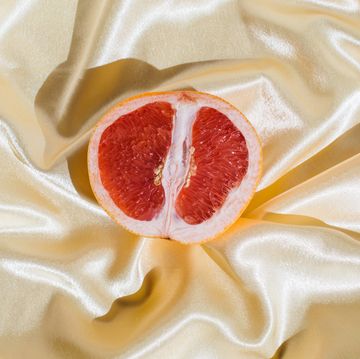
10 Reasons Your Vagina Feels So Darn Itchy

13 Common Causes Of Rashes On Your Butt
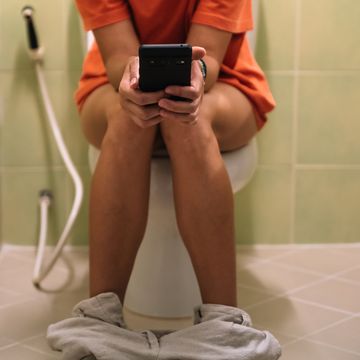
13 Reasons Why Your Pee Smells Funny
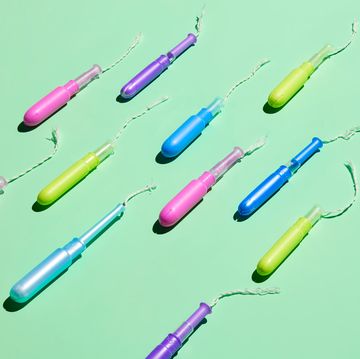
12 Reasons Your Vagina Hurts So Much, Per Doctors


